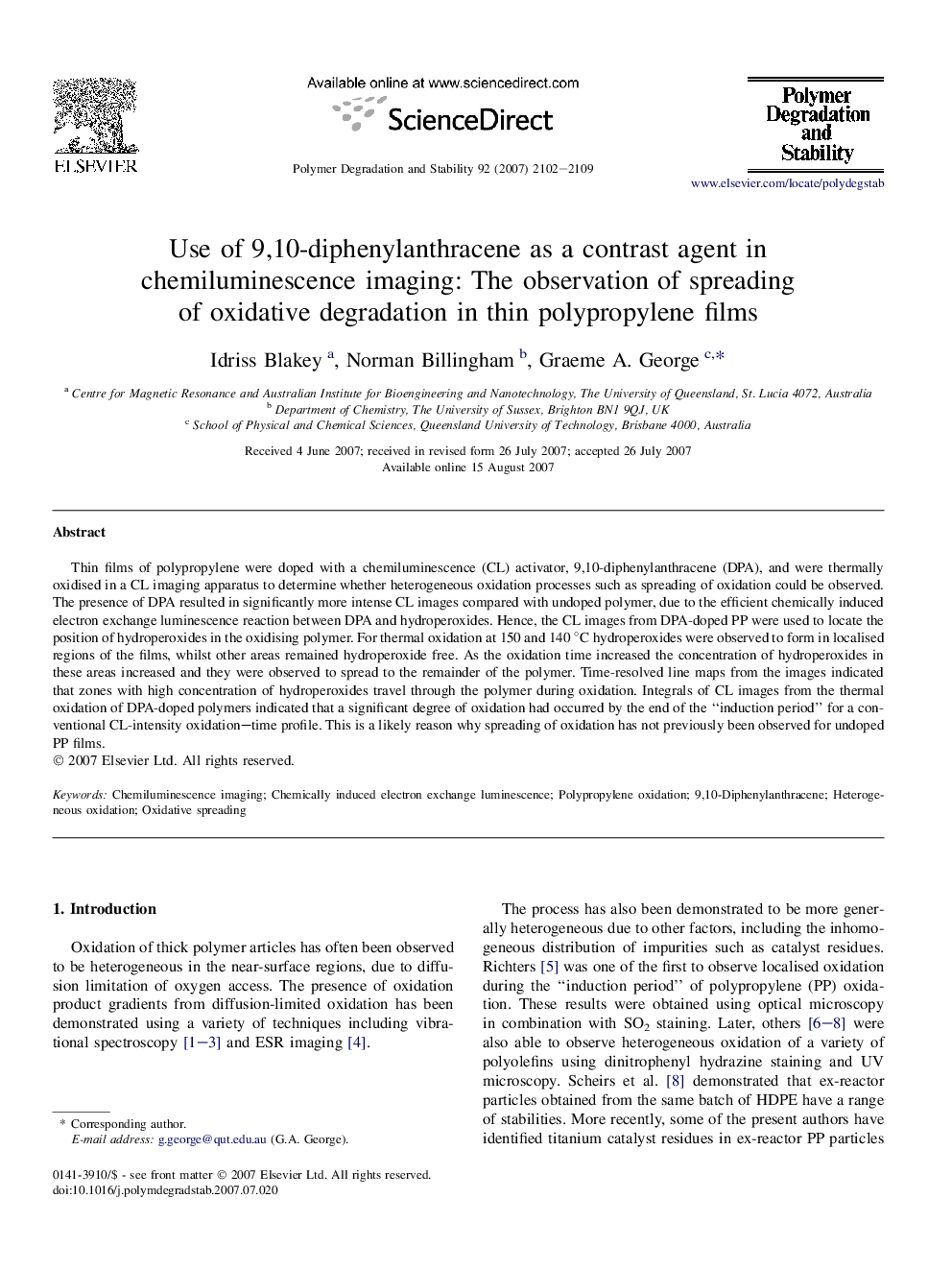| Article ID | Journal | Published Year | Pages | File Type |
|---|---|---|---|---|
| 5203968 | Polymer Degradation and Stability | 2007 | 8 Pages |
Thin films of polypropylene were doped with a chemiluminescence (CL) activator, 9,10-diphenylanthracene (DPA), and were thermally oxidised in a CL imaging apparatus to determine whether heterogeneous oxidation processes such as spreading of oxidation could be observed. The presence of DPA resulted in significantly more intense CL images compared with undoped polymer, due to the efficient chemically induced electron exchange luminescence reaction between DPA and hydroperoxides. Hence, the CL images from DPA-doped PP were used to locate the position of hydroperoxides in the oxidising polymer. For thermal oxidation at 150 and 140 °C hydroperoxides were observed to form in localised regions of the films, whilst other areas remained hydroperoxide free. As the oxidation time increased the concentration of hydroperoxides in these areas increased and they were observed to spread to the remainder of the polymer. Time-resolved line maps from the images indicated that zones with high concentration of hydroperoxides travel through the polymer during oxidation. Integrals of CL images from the thermal oxidation of DPA-doped polymers indicated that a significant degree of oxidation had occurred by the end of the “induction period” for a conventional CL-intensity oxidation-time profile. This is a likely reason why spreading of oxidation has not previously been observed for undoped PP films.
